Helping Children Learn to Play with Dolls
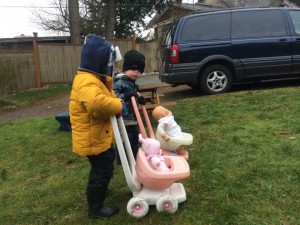
Dolls give children a different kind of play opportunity. Just like other toys, kids could use some support to help them figure out this play. In this century, it really should be possible for all kids–girls and boys–to play with dolls if they want. Most children’s toys need some kind of action, such as fitting puzzle pieces, stacking blocks, or zooming cars. Dolls are for feelings as well as actions. The play experience is also one of relationships.
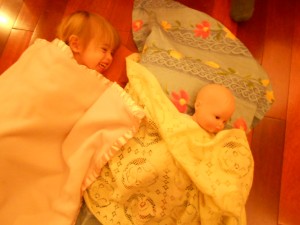 We can help children play with dolls beyond what they would do naturally. Some research projects have given chimpanzees and monkeys access to dolls. The animals play with them by cuddling and carrying them around. Is this instinct? Possibly, but the young have also seen mothers caring for their animal babies so they imitate this behavior. Toddlers will also cuddle and carry dolls and we can extend their play.
We can help children play with dolls beyond what they would do naturally. Some research projects have given chimpanzees and monkeys access to dolls. The animals play with them by cuddling and carrying them around. Is this instinct? Possibly, but the young have also seen mothers caring for their animal babies so they imitate this behavior. Toddlers will also cuddle and carry dolls and we can extend their play.
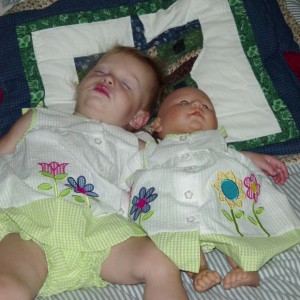 Extending play can be as simple as singing to a doll or having a conversation. Although the dolls do not reply, we can easily pretend and fill in the gaps, or use different voices. As we model this, children will imitate and also sing and talk. Children are practicing the skills used in real relationships and building a framework for conversations. As we participate in play, we can ask dolls what they need, using the words that kids can say to tell us their own needs. Children may form deep attachments to favorite toys that last for months and years. Misplacing or losing a special one can be a catastrophe.
Extending play can be as simple as singing to a doll or having a conversation. Although the dolls do not reply, we can easily pretend and fill in the gaps, or use different voices. As we model this, children will imitate and also sing and talk. Children are practicing the skills used in real relationships and building a framework for conversations. As we participate in play, we can ask dolls what they need, using the words that kids can say to tell us their own needs. Children may form deep attachments to favorite toys that last for months and years. Misplacing or losing a special one can be a catastrophe.
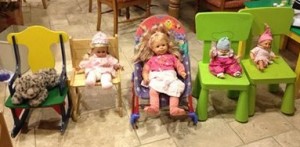 Play with dolls stimulates imagination. Pretend play can be very involved and creative. Children often feel like they have no power, that adults have it all. When kids play with dolls, the play can sometimes be rough and aggressive, as kids explore how it feels to be in control. Watching their play can sometimes give us clues as to what children are feeling.
Play with dolls stimulates imagination. Pretend play can be very involved and creative. Children often feel like they have no power, that adults have it all. When kids play with dolls, the play can sometimes be rough and aggressive, as kids explore how it feels to be in control. Watching their play can sometimes give us clues as to what children are feeling.
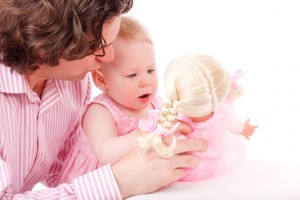 By engaging with kids and dolls ourselves, we model many different behaviors. Children will build on this in their play. Conversations, relationships, feelings, and imagination are part of children’s play with dolls and contribute to their overall fun and early learning.
By engaging with kids and dolls ourselves, we model many different behaviors. Children will build on this in their play. Conversations, relationships, feelings, and imagination are part of children’s play with dolls and contribute to their overall fun and early learning.
Does your child play with dolls? What are some ways that you extend this play?

Awesome Web-site, Preserve the wonderful work. Regards.